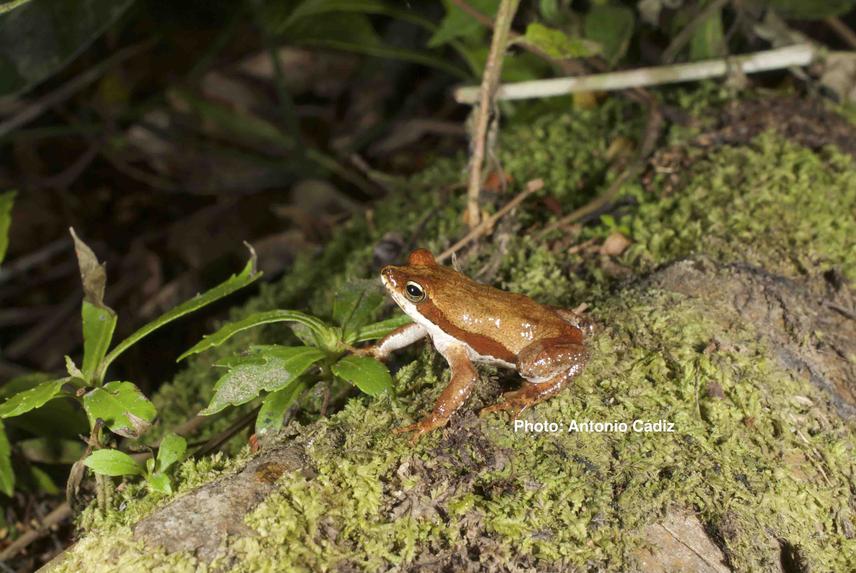Mey Ling Reytor Gonzalez
We aim at protecting the only amphibian known to be infected the lethal chytrid fungus in Cuba. We will assess the prevalence of the fungus and suggest initiatives to diminish the impact of the disease and to alleviate anthropogenic pressures on the species.

Adult B longinasus. © Antonio Cadiz.
Amphibians are the most threatened vertebrate class on the planet. They are facing an extinction crisis that threatens up to 50% of all species (Gewin 2008). Chytridiomycosis, which is caused by the pathogenic fungus Batrachochytrium dendrobatidis (Bd), is the most infectious and deadly disease ever documented in amphibians, which is now recognized as a proximate driver of their declines. In Cuba, Bd was documented for the first time in one population of Peltophryne longinasus (Díaz et al. 2007) in Central Cuba, an endemic and endangered Cuban amphibian. After its discovery, no additional efforts have been made to assess the impact of Bd in P. longinasus populations, or to detect this fungus in any other species or locality in Cuba. Thus, other populations of P. longinasus may be affected, and the fungus itself might have a broader distribution throughout the country. This amphibian has a scattered distribution and is restricted to mountains, breeding exclusively in small streams having specific characteristics. This ecological specialization imposes additional conservation challenges because we have observed serious alteration of their breeding sites, due to the use of those small streams for rearing farm animals such us pigs but also due to intense touristic activities.
Since no evidence regarding the fungus occurrence in Cuba is available, we aim at generating valuable information about the conservation status of P. longinasus, assess the prevalence of the fungus in natural populations and estimating its present and future impact.
I will be working directly with Dr. Antonio Cádiz Díaz, who is a skillful herpetologist with more that 12 years of experience in the field, which will be an important asset to meet our goals. We both also aim at raising awareness about the value of amphibians and the necessity of protecting P. longinasus. This will be accomplished by engaging both local people and rangers at Protected Areas. We will train rangers in the identification of P. longinasus and the application of sensing techniques to enhance a long-term monitoring. In addition, we want to initiate a dialogue with local touristic agencies in order to promote a conscious protection of Pl’s breeding sites.